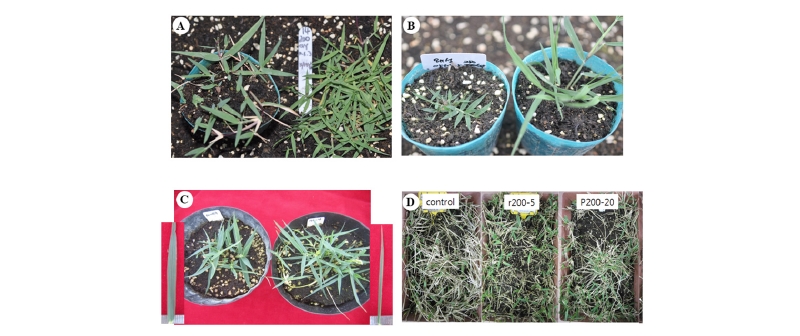Abstract
With limited genetic resources, traditional methods of turfgrass breeding such as plant introduction, recurrent selection, and hybridization have shown difficulties of genetic recombination and increase in genetic variation. Considering the challenges, radiation-induced mutation is an alternative tool to extend genetic diversity in the short term. This study was to assess morphological and genetic difference of radiation-induced Korean lawngrass (Z. japonica) mutants from non-radiated wild type. Those mutants irradiated with 200-250 Gy radiation were selected for their unique morphological and physiological characteristics including fine-leaf, dwarf, higher tiller and density, or low temperature greening. Compared to pot evaluation under green house, all the morphological traits were significantly different among accessions in the field conditions. Selected mutants showing reduced leaf width, angle, and plant height demonstrated consistent performance both in pot and field studies. Selections exhibiting green color retention in the beginning of dormancy were found to have lower malondialdehyde (MDA) content, indicating resistant to oxidation of lipid membrane with lower temperature. The phylogenic tree from the amplified fragment length polymorphism (AFLP) analysis verified the expanded genetic diversity, where non-irradiated control was grouped in a separate clade, with farther genetic distance from other mutants. The polymorphic information content describing the chance of different allele at marker loci indicates that about 16% of the allele changes was partly attributed to gamma radiation or proton beam as a physical mutagen. The confirmed results demonstrated that the mutation induction can secure desirable traits of zoysiagrass, with providing the enlarged genetic diversity.
Figures & Tables

Fig. 1. Initial screening of zoysiagrass mutants induced from treatments of gamma radiation or proton beam. (A) WT (left) and higher tiller type (right), (B) Dwarf type (left) and WT (right), (C) WT (left) and finer leaf type (left), (D) WT (left) and 2 color retention types (right). WT: wild type.


